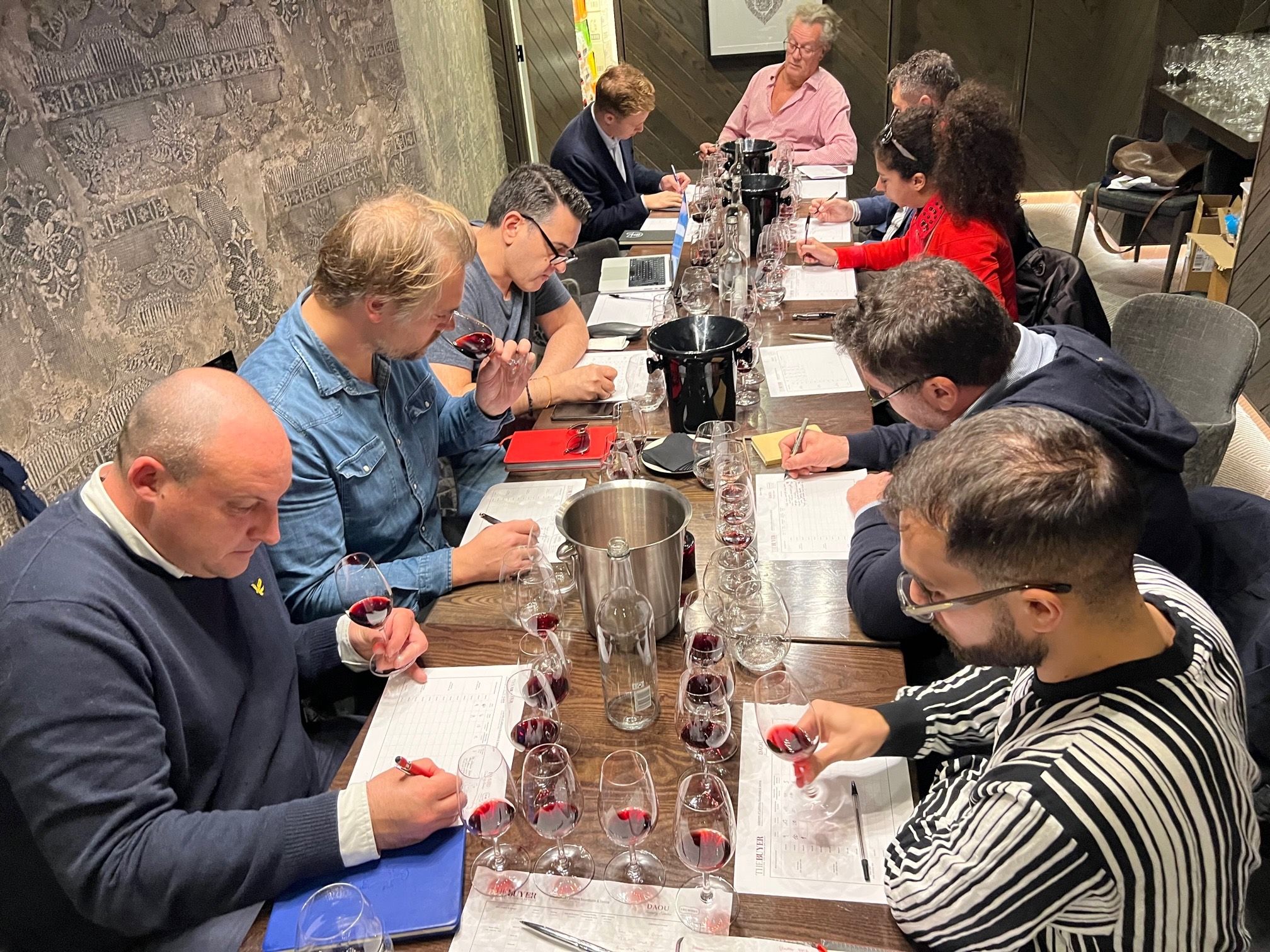No matter how confident you are in your own wine there is nothing quite like putting it up against your peers in a blind tasting. Welcome to The Buyer and Daou Family Estates’ Judgement of California and wider on debate Paso Robles and Californian wine.
Sommeliers and wine buyers are paid to know their wines. To be able to pick up a glass and immediately tell you if it is worth buying, never mind drinking. It is a skill and ability learnt over years of tasting, hours of practice, and a constant dedication to improve your palate, and be constantly questioning, and learning about new wine regions and what they might offer their venues, their businesses and their customers.
It’s quite an experience to watch top sommeliers and buyers in action as they are tasked with assessing, judging and scoring wines against each other in a blind tasting. That was part of the challenge – and opportunity – that was in store for those who signed up to take part in the latest The Buyer debate, in partnership with Paso Robles’ producer, Daou..
First there was the chance to discuss where Paso Robles now sits as a sub region in its own right, but also look at how its wines compare and contrast to California as a whole with a blind tasting and scoring exercise.
Up for the challenge were the following buyers:
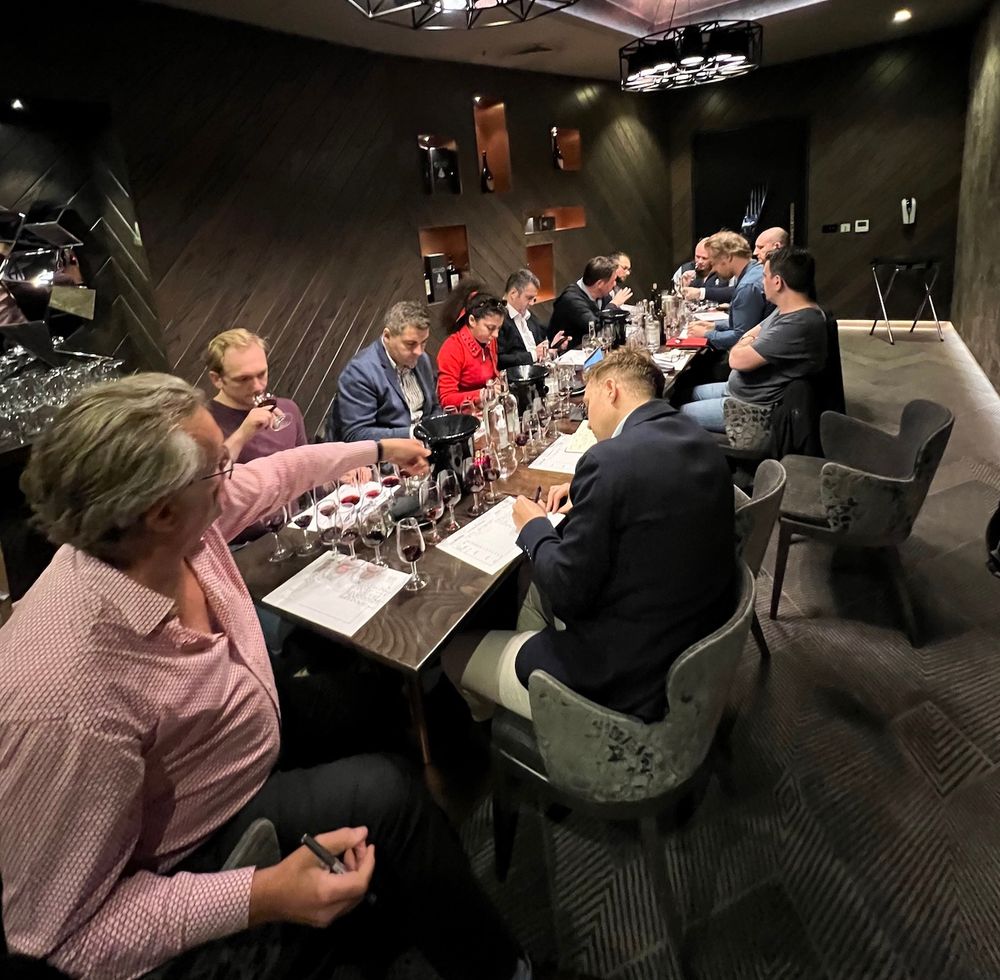
The panel brought together top sommeliers and leading importers to hear their views on California and Paso Robles
- Elvis Ziakos, head sommelier at Mark’s Club Birley Group.
- Jonathan Kleeman, head sommelier at Restaurant Story.
- André Luis Martins head sommelier and wine buyer at Cavalry and Guards Club.
- Sylwester Piasecki, head sommelier at The Pem with chef patron Sally Abe.
- Nadia Khan, head sommelier at The Frog by Adam Handling.
- Nicola D’Ascenso, head sommelier, Berners Tavern at The London Edition
- Edd Simpson, founder of Barrique Fine Wines.
- Arnaud Compass, founder of Vinotheq Compass.
- Cameron Gates, private client sales manager, Roberson Wine.
Additionally, on behalf of DAOU and their UK Importer, Carson & Carnevale Wines:
- Peter McCombie MW, wine consultant and Carson & Carnevale wines’ portfolio ambassador wines in the UK.
- Jon Carson, director of Carson & Carnevale Wines.
- Ranulf Sessions, international sales director for DAOU.
Peter McCombie kicked off the debate by stressing how important it was to treat California with the respect it now deserves, particularly in light of all the work that has one into creating specific AVAs within sub regions to reflect the micro climates and unique growing conditions different parts of the state have.
Paso Robles, for example, has 11 separate AVAs all offering different challenges for winemakers and the chance to make their own distinct style of wine.
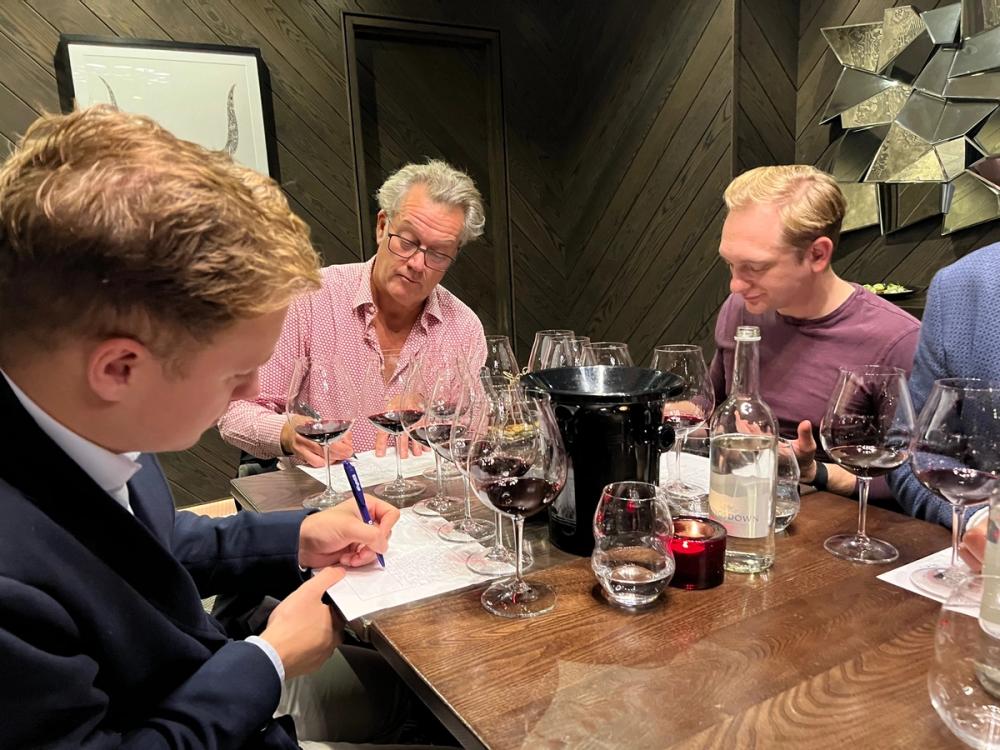
Peter McCombie with Restaurant Story’s Jonathan Kleeman and Roberson Wine’s Cameron Gates cast their votes in the Judgement of California blind tasting
“It is too easy to characterise California as producing a particular style of wine. There is so much wine both at the high end and low end. We are also guilty of forgetting the large middle ground there is now too. And it is also a lot more than just Chardonnay and Cabernet Sauvignon,” said McCombie.
The big difference we have seen arguably in the last 10 years has been the number of producers who are now willing to look outside of California and the rest of the US to grow their businesses.
It is refreshing to see, added McCombie, who said we should not forget those major players like Ridge and Gallo who have always looked to make their way in the UK market in particular.
André Luis Martins agreed that California as a whole has forced sommeliers and buyers to change their perceptions, backed up by the strength and quality of wines in all its various regions.
“There was a perception in the market, that to be good you had to be at the top end. But that is breaking up now. A lot of the bigger companies have more wines in the middle group. Like Jackson Family Wines. There are more sub regions to explore if you want to go and look for cooler stuff and don’t just stick with Napa.,” he explained. “The opening of the on-trade to California wine over the last 10 years has been massive.”
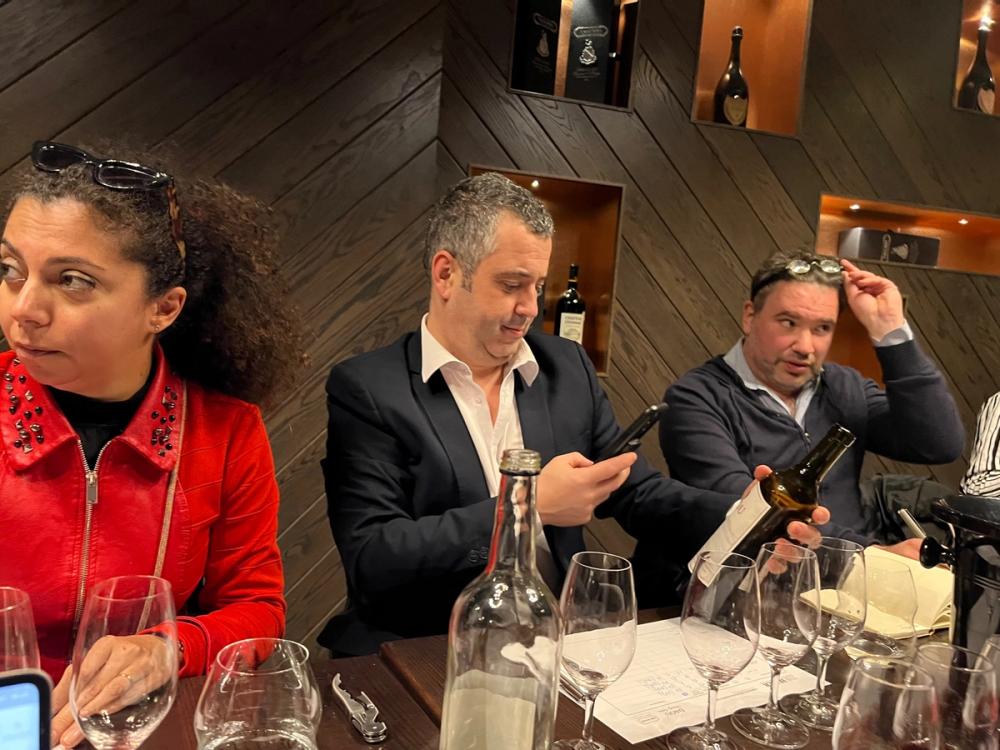
André Luis Martins, centre, says the Californian wine market has opened up “massively” in the last 10 years
Elvis Ziakos said he had definitely seen a “more open minded” approach from Californian producers in recent years. “They have travelled the world a lot and seen what is being done in other countries and gone back and looked at what they are doing with their oak, being less extracted and using more second hand oak, and looking to make wines with more minerality. Look at what is happening in the Central Valley with Grenache and Syrah. It is really interesting to see what is going on there. There are a lot of varieties of style and also prices to offer.
Creating an identity
The challenge, though, for Paso Robles is cementing a well understood identity for itself, agreed the panel. Whilst there is widespread recognition that Napa stands for quality, Paso Robles does not have the same immediate label to apply to it, added Cameron Gates at Roberson Wines.
Edd Simpson agreed and said that whilst it is clearly possible to make both Rhone and Bordeaux styles in Paso Robles it does not necessarily help with the region’s identity.
McCombie believes that is where the AVAs can really make a difference and start to give Paso more hooks for people to put their hats on.
Arnaud Compass certainly thinks Paso Robles has the wines to compete and do very well. It could actually come more into its own in the coming years as climate change takes effect and the region’s coastal influence and large swings in day and night temperatures could give it a growing edge.
“It’s all about retaining that freshness in the wines,” he said. “That is what is happening there and I can see that developing even more. Style and consistency is what matters most.”
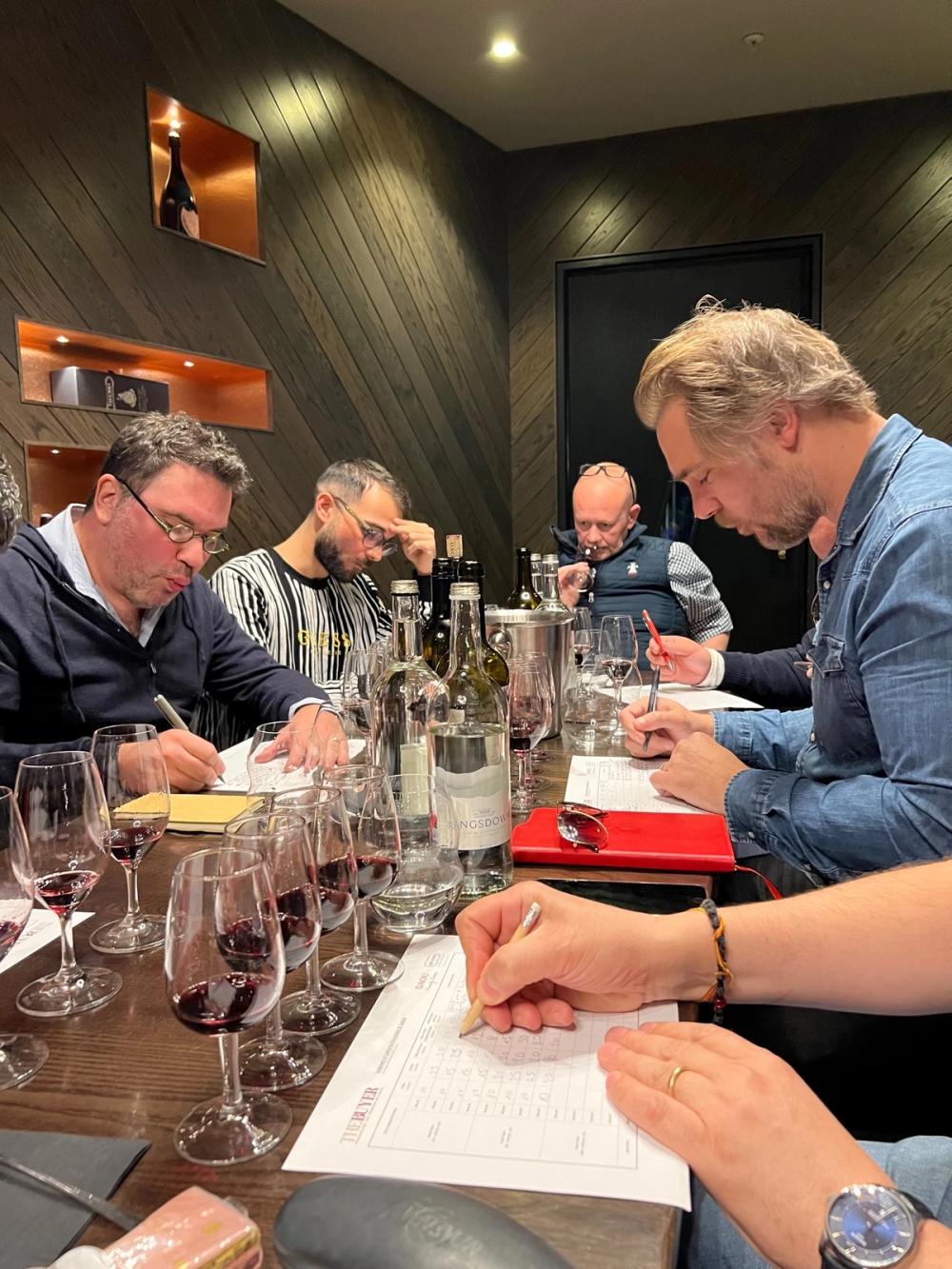
The panel was asked to taste and assess wines at different price points in our Judgement of California blind tasting
Cameron Gates said he is also seeing a big switch amongst his private customers at Roberson who “know what Mondavi and Opus One tastes like” and are now open to exploring new areas, particularly the mountain regions and wines that can offer the “freshness and acidity” that Compass was referring to. “They also want to get away from big names that have big prices and are quite happy to find more quality from lesser known producers. So that really opens up the market more to more new wave producers.”
Attention to detail
Ranulf Sessions was able to give some background to why Daou had chosen the higher altitudes of Paso Robles to make its wine. Particularly as its founders, brothers Georges and Daniel Daou, were born and raised in Lebanon and traveled to the US via France, not to find a career in wine, but to make their success in technology and business.
With the whole of the state to choose from they zeroed in on Paso Robles, and in particular their site high up at 2,200 feet at what has become known as Daou Mountain. It was here that 15 years ago they set out to make true California First Growth Cabernet Sauvignons and become Paso Robles’ ambassador for Bordeaux varieties thanks to the fact the mountain is made up of rare soil, calcareous clay soils, the same soils found in Saint-Émilion and the right bank of Bordeaux.
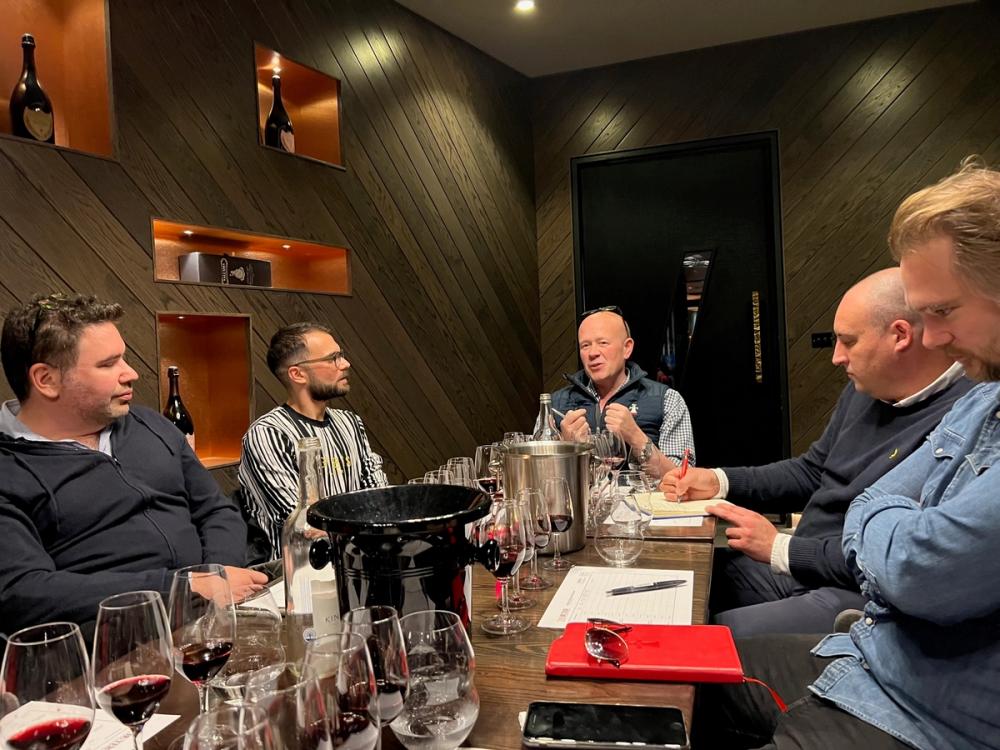
Daou’s Ranulf Sessions was able to share the producer’s dedication to quality and self improvement
“There is not one rock that they won’t lift in order to improve the quality of what they do,” said Sessions. “They are driven by continuous improvement. Every grape is hand picked. The attention to detail is very important.”
With pressure on water so tight in California and Paso Robles, in particular, they have even gone as far as to train their own vines to be drought resistant, and to build up immune systems to deal with drought conditions. The calcareous soils are also amongst the best for retaining water. “It is all about future proofing their vines. Climate change is at forefront of every conversation.”
But they also want to foster a “pioneering spirit” to ensure everything is being done to improve the quality of their wines, said Sessions, pointing to the work that has been done to select the right Cabernet clones.
Quality that it hopes shine through in its premium wines, most notably its flagship wine,
Sustainability drive
Martins thinks Paso can certainly win over some younger consumers with its push for organics and sustainable winemaking. “Younger people are looking to see how the wines are made and focusing on what is going on in the vineyards. Having these AVAs brings more to the table.”
He added: “There has been a massive change amongst consumers between those in the fifties who want Napa and then younger consumers who come in and know what they want. I am now putting wines on my list in a private members club that I would never have thought I would be able to do. They are the future customer and they are looking for provenance and stories.”
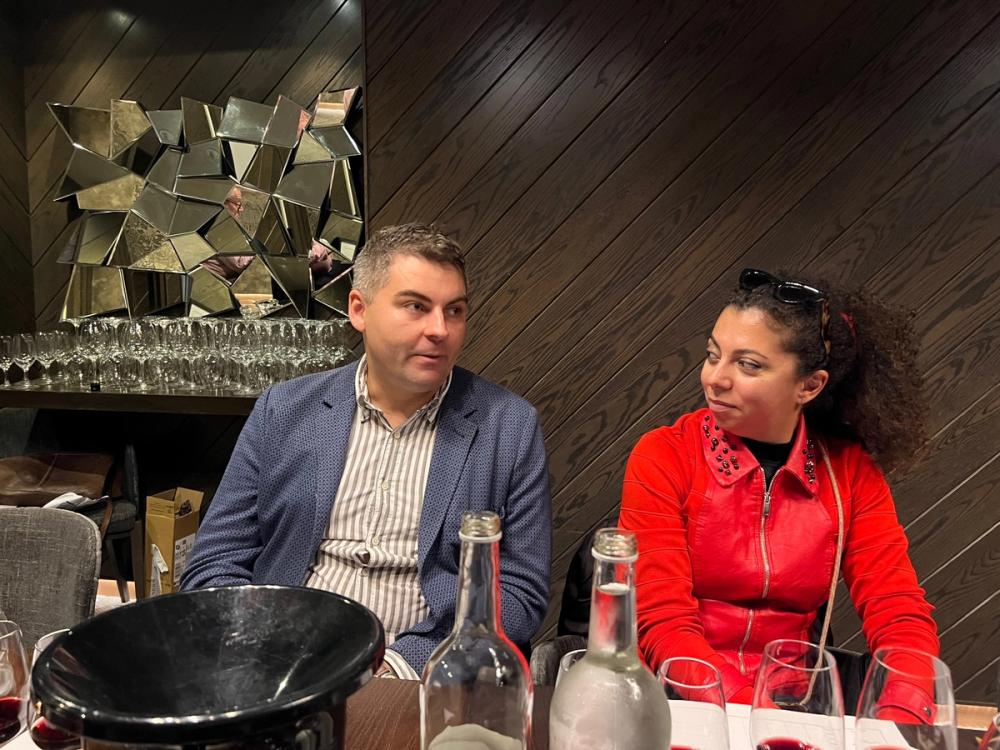
Sylwester Piasecki and Nadia D’Ascenso were able to share their experiences of what customers are looking for from Californian wine
Nadia Khan agreed: “Sustainability is the crucial point. Particularly with the young generation. That is why we are able to put more wines from California on our lists as it attracts all types of interests. There is now the chance to explore all the different AVAs. People are discovering California in different ways. It is our responsibility as professionals to try and help and educate our customers where we can and show them where the opportunities are.
“Buying from California can be a little tricky, but the demand is there and the more wines you have the more guests will go to them.”
Berners Tavern’s Nicola d’Ascenso said he is keen to know more and taste a wider range of wines from Paso Robles. “The range of grape varieties and soil types there are interesting and getting better all the time.” The issue for him is not having enough “historical producers” that customers know and understand.
Edd Simpson at Barrique Wines in Leeds said California is still a harder sell in the on-trade than it is retail and with specialist merchants. Particularly if they are not as well known or “classic” California in style..
Judgement of California Tasting
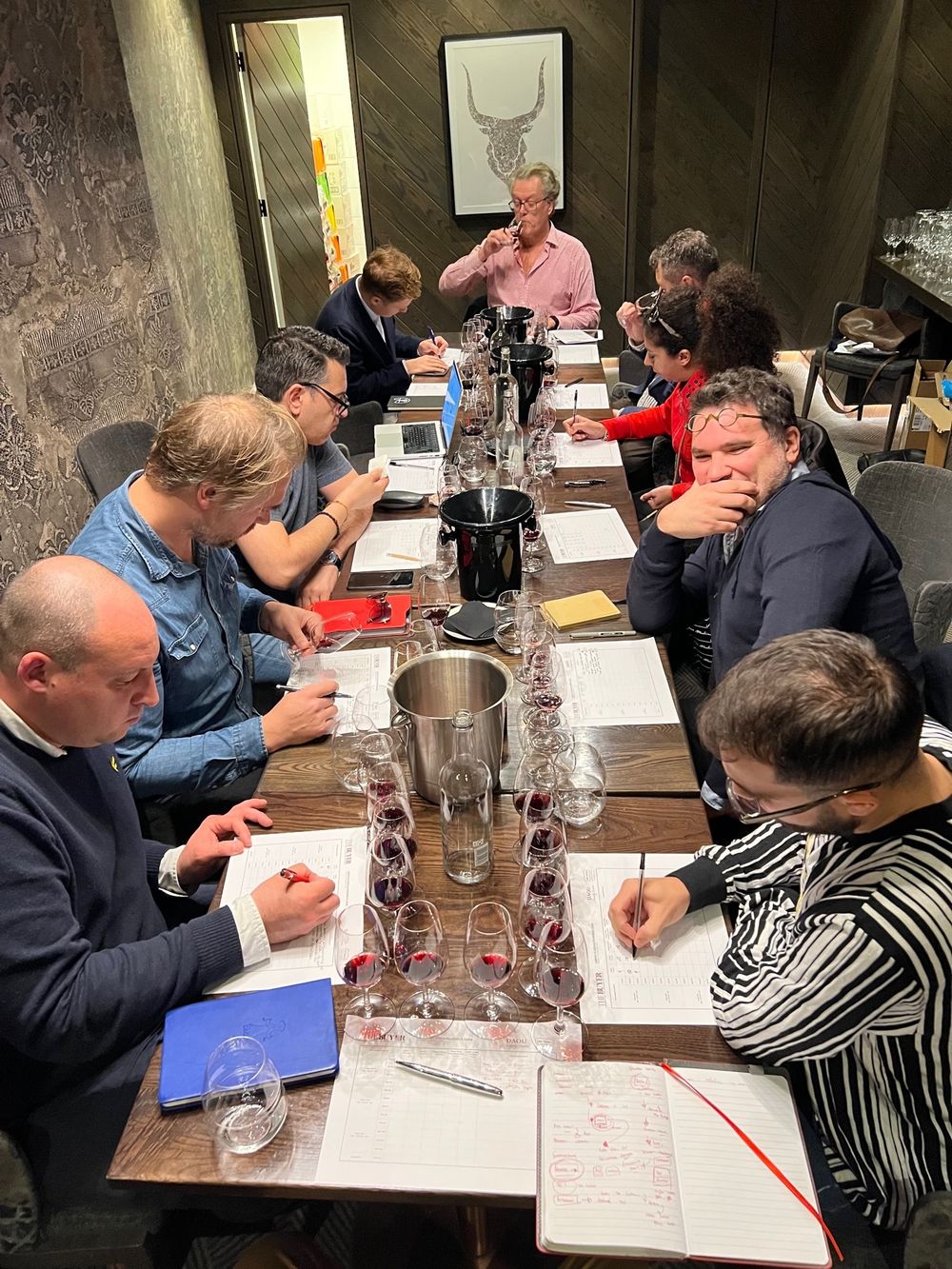
The panel was asked to judge each wine or colour, aromas, body and structure, its flavour profile, complexity, finish and ability to match with food
Whilst the buyers and sommeliers were quite happy discussing the potential merits, opportunities and challenges that California faces they were also there to take part in The Buyer and Daou’s very own Judgement of California tasting.
An informal way to give some of the most influential buyers in the country the chance to assess different Californian wines against some of their peers across different segments of the market.
How it worked
Three flights of four wines were poured, in turn, and the sommeliers and buyers were asked to professionally score the wines out of a 100. All wines were from the 2018 vintage.
Scoring System:
- Colour: 10 points
- Aromas: 25 points
- Body and structure: 25 points
- Flavour profile, complexity and finish: 30 points
- Ability to match with food: 10 points
The different flights were:
Flight 1: Wines between £20-£30 retail value (including VAT).
Flight 2: Wines with a retail value between £50 and £99 (including VAT).
Flight 3: Wine with a retail value of £100 to £225 (including VAT).
The one caveat being there was one DAOU wine lurking in each flight waiting to be discovered.
Not surprisingly the scores of the wines increased through the flights but it was noticeable just how much difference there was in the scoring per wine ranging as far as 35 out of 100 to 96 out of 100 for the same wine.
Flight 1: £20-£30 (including VAT)
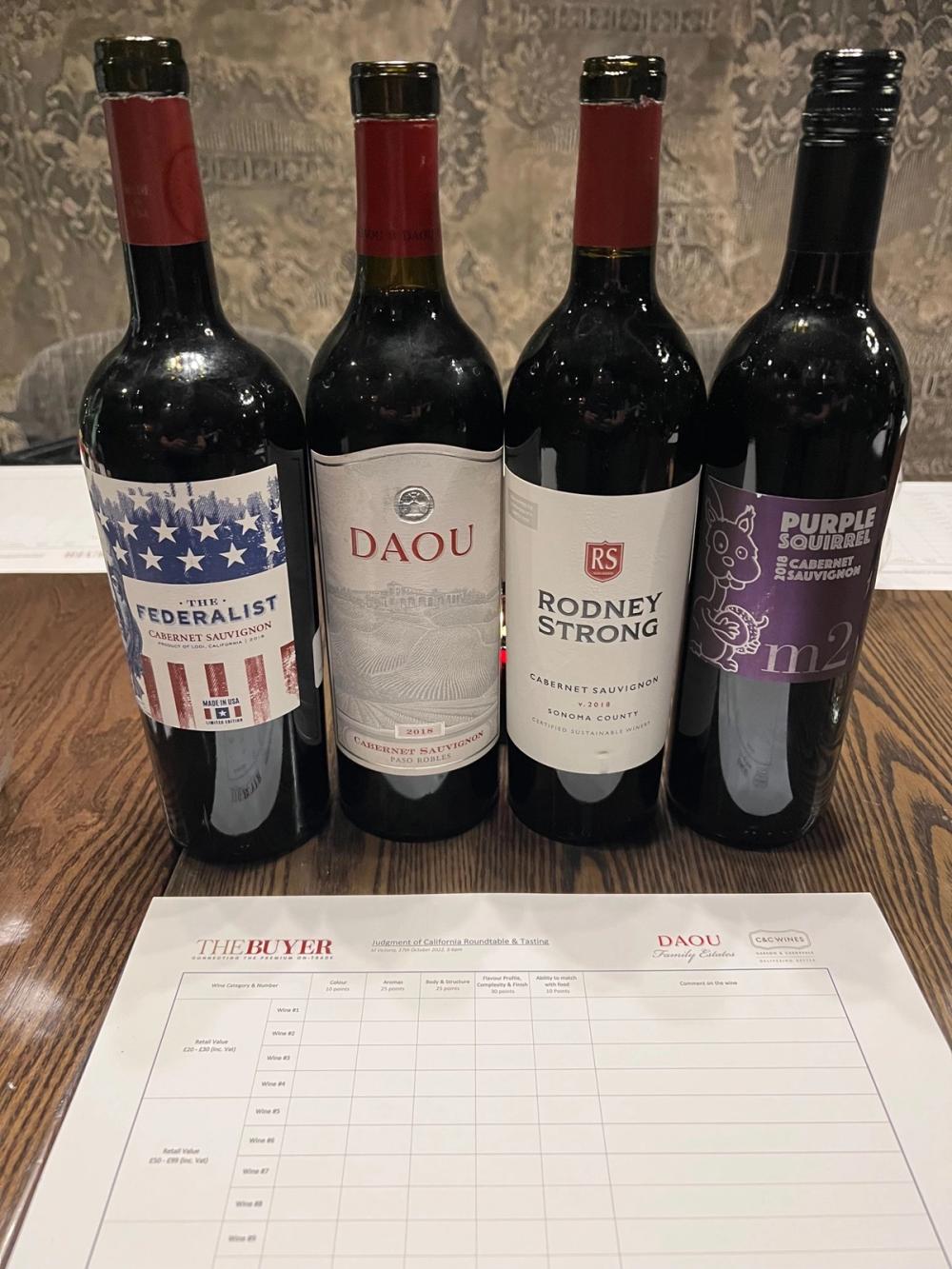
Flight 1: wines between £20 and £30 retail
Wines and Scores
1: 812 points
Daou, Discovery Cabernet Sauvignon 2018 (Paso Robles) 812 points
2: 809 points
Rodney Strong, Cabernet Sauvignon 2018 (Sonoma County)
3: 804 points
Purple Squirrel, Cabernet Sauvignon 2018
4: 771 points
The Federalist, Cabernet Sauvignon (2018 Lodi)
The first flight received a mixed reaction from the panel. Sylwester Piasecki bucked the trend by consistently scoring the wines well, saying he felt the consistency was strong for wines at that price point.
Simpson felt you could get better value and quality in other parts of the world at what is still a pretty punchy price point. Compass felt the wines were a “bit predictable” but then agreed at least they stood out as Californian in the same way that a Rioja represents its region.
Whilst Khan praised the wines for their “overall good quality and balance” she was not sure about the obvious high alcohol levels and their ability to pair well with food. “They are not bad value for money.”
Flight 2: £50 to £99 (including VAT)
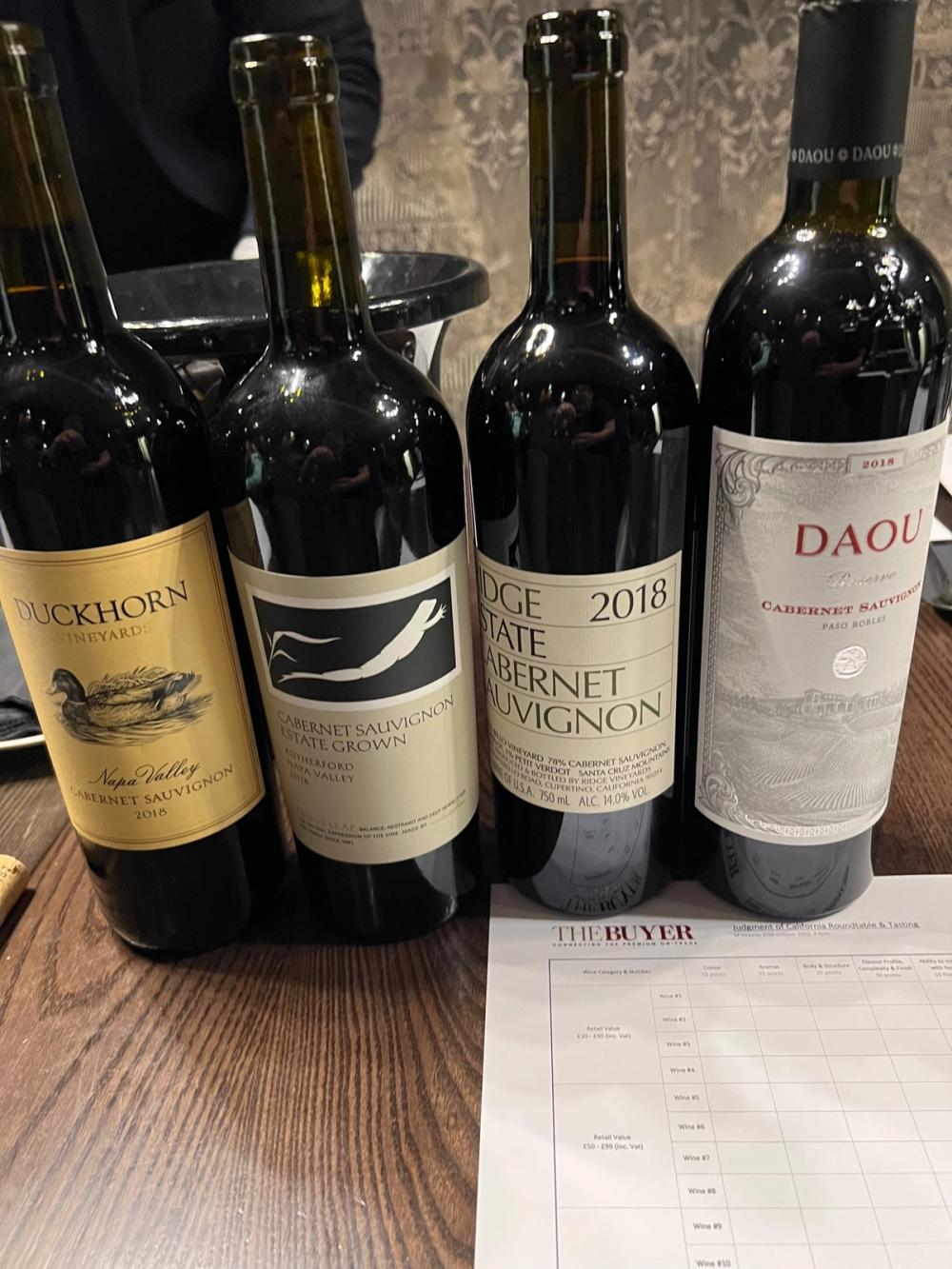
Flight 2: wines between £50 and £99
Wines and Scores
1: 951 points
Duckhorn, Cabernet Sauvignon 2018 (Napa Valley)
2: 940 points
Daou, Reserve Cabernet Sauvignon 2018 (Paso Robles)
3: 931 points
Ridge, Estate Cabernet Sauvignon 2018 (Santa Cruz)
4: 879 points
Frog’s Leap, Cabernet Sauvignon Estate Grown, 2018 (Rutherford, Napa Valley)
McCombie felt there was “more freshness, elegance and back bone in this flight”.
Khan, though, was not so sure, although she could not fault the quality. “There is a lack of complicity at this level and price point. I would like to see more intensity of fruit and a cleaner finish. The vintage of fruit is not coming over and there are not enough details in the wine.
Piasecki felt the Duckhorn Cabernet Sauvignon “was the most elegant” of the four.
Flight 3: £100 to £225 (including VAT)
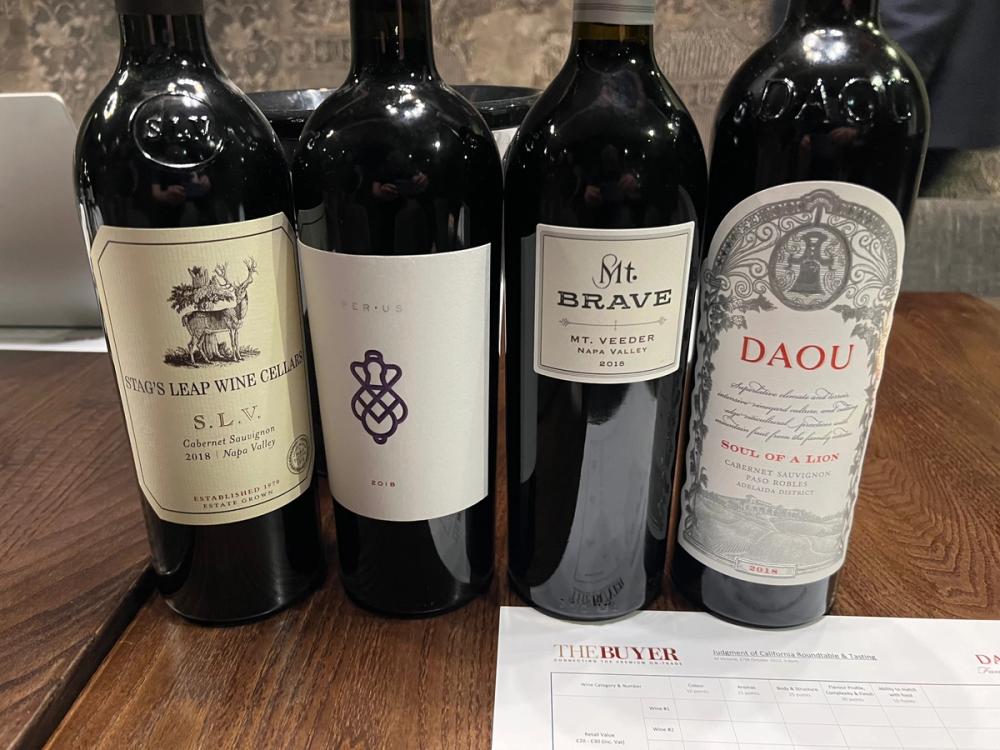
Flight 3: Wines over £100
1: 1,010 points
Daou, Soul of a Lion, Cabernet Sauvignon 2018 (Paso Robles)
2: 1,002 points
PerUs, Cabernet Sauvignon 2018 (Washington State)
3: 988 points
Mount Brave, Mount Veeder 2018 (Napa Valley)
4: 967 points
Stag’s Leap, S.L.V. Cabernet Sauvignon 2018 (Napa Valley)
“Wow,” was how Compass completed his scores. “You can really see the complexity in these wines, the personality, the character and the attention to the structure of the wine and how they are treated with wood.”
Martins said it was like comparing a “Ferrari with a Maserati”. “These are all good wines. You can see the step up in quality,” added Ziakos.
Simpson said it was also good to see the variety between the wines the fact there was a “lot of contrast between them”.
“There is clearly more winemaking going on here,” said McCombie.
Gates, though, was keen to point out that at 2018 these are all still very young wines and their best years are some way down the line. “That’s what gets me excited about them,” he said.
Martins agreed and said that if they being asked to assess 2018 Cabernet Sauvignons from the Old World then “their tannins would be striking you in the face”. “These, though, are already approachable and you can drink them already. That is so important for us in the trade.”
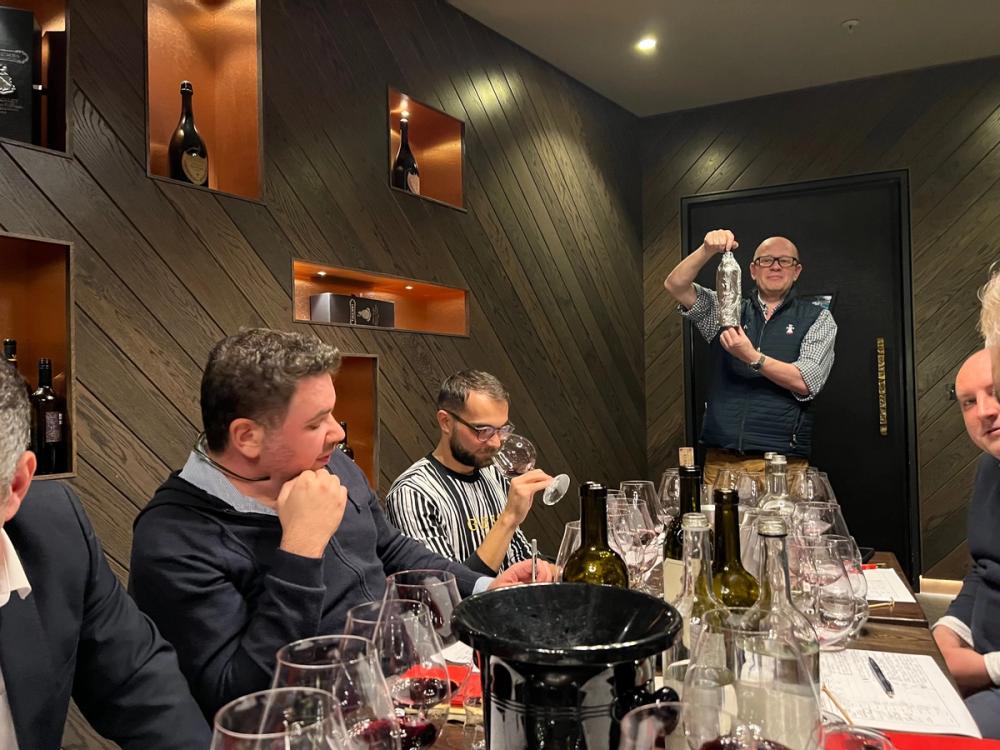
Ranulf Sessions reveals the wine that came out top in the Judgement of California: Daou’s Soul of a Lion
Jonathan Kleeman still felt they were still a little too young to list now, but it would be a matter of time. He is currently enjoying and listing wines from the 2015 and 2014 vintages. “You always have to look at what works vintage to vintage as it varies so much.”
Khan added: “Each wine has its own personality and a freshness and tannin that comes through well, as it can be quite austere. They are all very, very good.”
Kleeman said it had been a fascinating tasting to do and was intrigued to see such differences in the scores given by the panel. “It was a really good tasting.”
Although the exercise was not about winning, but to showing how different Californian Cabernets can perform alongside each other, it did not go unnoticed that DAOU walked away with the top prize and score in the icon category, with the highest score overall – 1,010 points – for its 2018 Soul of a Lion. It was also the highest scoring wine in the £20 to £30 price bracket and came second in £50 to £99 flight.
Considering the huge differences in the scores given by the buyers and sommeliers this was as fair as fair can be and no need to call in VAR.
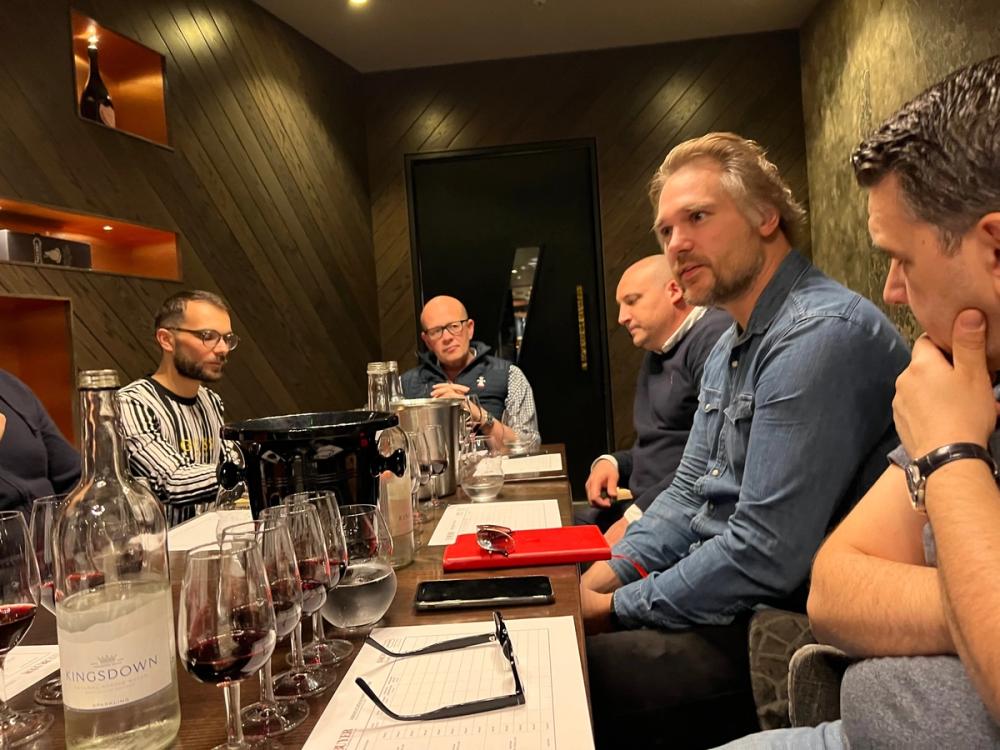
Barrique Fine Wines’ Add Simpson said the blind tasting was a great way to see the diversity and complexity across a range of top producers
“Fascinating. What a great idea and it was good to see how the wines performed alongside each other,” said Simpson.
Gates agreed: “It’s such a great opportunity to taste wines like this from across California in this way.”
Khan said she was pleased to “find lots of freshness across the flights” and that “there was balance and complexity” to most of the wines.
The fact it was a Paso Robles producer that came out top against its more esteemed peers in Napa and Sonoma certainly backs up the commitment to produce the best possible quality wines possible.
- If you want to find out more about Daou then go to its website here and if you are interested in trying or listing any of its wines then talk to Jon Carson at its UK importer, Carson & Carnevale at j.carson@carsoncarnevalewines.com. Carson & Carnevale is a supplier partner to The Buyer.
- The 2019 vintage of Soul of the Lion has just been released. Read The Buyer’s verdict on the wine and read more about the Daou story here.
* Our thanks go to to the team at M Victoria for hosting the debate and for helping with the tasting.
